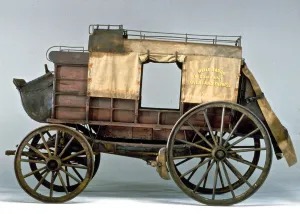Blind to Disruption – The CEOs Who Missed the Future via Steve Blank
In the early 20th century, the United States was home to more than 4,000 carriage and wagon manufacturers. They were the backbone of mobility and the precursors of automobiles, used for personal transportation, goods delivery, military logistics, public transit, and more. These companies employed tens of thousands of workers and formed the heart of an ecosystem of blacksmiths, wheelwrights, saddle makers, stables, and feed suppliers.
And within two decades, they were gone. Only 1 company out of 4,000 carriage and wagon makers pivoted to automobiles.
Read this entire article – Blind to Disruption – The CEOs Who Missed the Future via Steve Blank
![Blind to Disruption – The CEOs Who Missed the Future via Steve Blank [Shared]](http://welchwrite.com/blog/wp-content/uploads/2025/01/olomouc-17-1-scaled.jpg)




